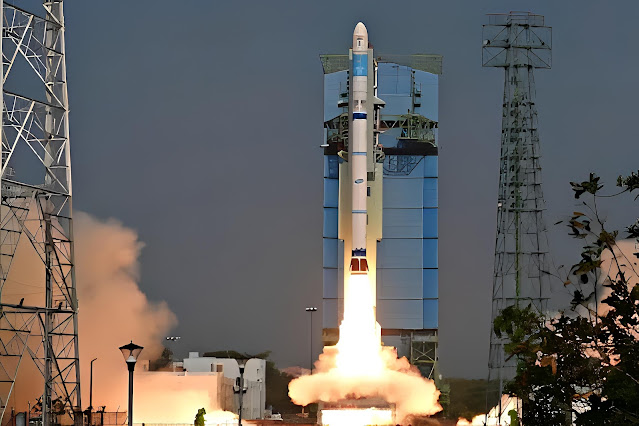On Sunday, the Indian Space Research Organisation (ISRO) marked a significant achievement in its illustrious history by successfully launching the Earth Observation Satellite (EOS-09) aboard the Polar Satellite Launch Vehicle (PSLV-C61) to second stage. This mission not only signifies ISRO's 101st satellite launch but also showcases India's growing capabilities in space-based solutions.
A New Era of Earth Observation
Launched at 5:59 AM from the Satish Dhawan Space Centre in Sriharikota, PSLV-C61 embarked on its 63rd flight and operated under the PSLV-XL configuration for the 27th time. The EOS-09 satellite, weighing approximately 1,696.24 kg, is designed to capture high-resolution images of Earth's surface under various weather conditions. This capability is crucial for a multitude of applications, including:
- Agriculture: Providing vital data for crop health monitoring and yield predictions.
- Forestry Monitoring: Tracking deforestation and forest health.
- Disaster Management: Offering real-time data during natural calamities to aid rescue operations.
- Urban Planning: Facilitating smart city initiatives through precise land-use mapping.
- National Security: Enhancing surveillance capabilities along borders and coastlines.
Blessings for Success
Prior to the launch, ISRO chairman V Narayanan sought divine blessings for a successful mission by offering prayers at the Lord Venkateswara temple in Tirupati. His act included placing a miniature model of PSLV-C61 at the deity's feet, demonstrating ISRO's deep-rooted cultural values intertwined with technological advancements. “This 101st mission with PSLV-C61 will mark a major milestone for ISRO," he stated confidently, emphasizing India’s commitment to advancing all-weather earth observation capabilities.
Strategic Significance of EOS-09
Former ISRO scientist Manish Purohit highlighted that EOS-09 serves as a follow-on mission to the earlier RISAT-1 satellite. He underscored its strategic timing amidst heightened concerns regarding border security. The satellite enhances monitoring capabilities specifically in sensitive areas, providing critical data that can aid anti-terror operations—especially relevant given recent incidents like the Pahalgam terror attack and Operation Sindoor.
Complementing Existing Satellite Systems
The EOS-09 satellite complements and supplements data from existing satellites such as Resourcesat, Cartosat, and RISAT-2B Series satellites. As a repeat satellite of EOS-04 launched in 2022, it aims to improve operational applications through enhanced frequency of observation. By becoming part of an extensive constellation of Earth Observation satellites, EOS-09 reinforces India's stature as a leader in space technology.
Conclusion
ISRO's successful launch of EOS-09 to second stage marks another pivotal chapter in its ongoing journey toward achieving excellence in space exploration and technology. With this advancement, India continues to strengthen its position on the global stage while providing invaluable services to its citizens across various sectors. As we reflect on this milestone, it becomes clear that each launch not only expands our scientific horizons but also fortifies our commitment to harnessing space-based solutions for better governance and improved quality of life.
Tags
News





